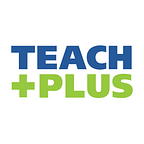Flexibility Is Key to Successful, Equitable Remote Learning
By Krystal Clifton
In September, when most of my fourth-grade students were learning remotely, I asked them to set up three scenarios with three slices of bread. It was a perfect at-home science investigation: They would take pictures of the bread over time and write about their observations. When it was Lauren’s day to come to school in person, I asked her why she hadn’t submitted her pictures yet. She hesitated; I could tell she felt uncomfortable. Then she whispered, “Sometimes the people who live next door don’t take care of their house. Sometimes, things come from their house to ours. The rats ate my bread.”
Although I thought I had created a project that would work for all students, I failed. At Lauren’s home, the living conditions didn’t allow for food items to be left out. Two other students just didn’t have bread at home. The best laid plans can fail if we don’t take into account and value students’ individual circumstances.
I’ve always been mindful of my students’ needs because I teach in a district where most students are living in poverty and many have unstable home situations. However, with remote learning, I have to be even more flexible than before. I’ve adjusted my hours so I can meet with students early in the morning and communicate with parents throughout the evening when they get home from work. I’ve created videos for students who cannot attend school in person or on Zoom due to childcare needs or lack of internet access. I’ve spent hours getting donations from local businesses to create an incentive system for students who have lost motivation because of the pandemic. I’ve begged, borrowed, and pleaded to see the kids who need the adult interaction in person. I’ve partnered with parents and I’ve connected with kids in person, online, or on Zoom. Most of all, I’ve become an advocate for my neediest students.
This is why I believe that remote learning policies should be flexible enough to account for the variety of the circumstances of the students, parents, and their homes. This is not to say that flexibility should come at the expense of accountability. Students need to access instruction in a way that works for them, but the expectation is that they will access the instruction.
For example, expecting all students to access Zoom at the same time every day may seem like a reasonable expectation until you start to think about the variety of situations in students’ homes. Some students do not have a quiet place to attend a meeting, some have unreliable internet access, and others don’t have a home at all. They need flexibility to get access when and where they can. This means providing Zoom meeting times, in-person learning in small groups, pre-recorded lessons, and self-paced interactive learning experiences. The more ways we provide access, the more likely it is that students will access it. One of my students, Daniel, is at a daycare with no WiFi until 6 p.m. and can’t attend the Zoom meetings I hold during the day. I’ve worked with his mom to have him come to school to work with me one day a week. On other days, I provide him with video or interactive lessons that mirror what we learned in our class on Zoom that day. I cannot control his childcare situation, but I can make sure that he has access to an education regardless.
To make a variety of such options viable, teachers like me need time and support to develop them. We need planning time in our schedules to create additional materials. Districts can also help teachers by placing them into leadership positions because every decision will inevitably have an impact on students. Not only do teachers know instructional strategy and scope and sequence, but we also know the kids. We know which ones are currently homeless, which ones might be in a dangerous situation, and which ones aren’t putting in their best effort.
After speaking with Lauren, I knew that I needed to make a change. I posted several pictures of students’ results and asked other students to make observations from them. The relief on her face when I showed her the new plan made it clear that it only took a little bit of flexibility and compassion on my part to change the story for her. We all need to recognize that at this moment in time, presenting students with the most options gives them the greatest chance at accessing an equitable education.
Krystal Clifton teaches 4th grade at King Middle Grade School in Kankakee, Illinois. She is a 2020–2021 Teach Plus Illinois Policy Fellow.
